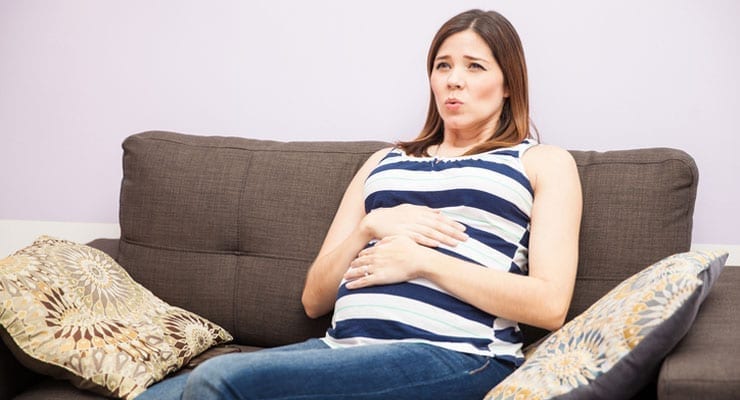In the last trimester of pregnancy, a pregnant woman feels intense cramps, and contractions in her body. Each contraction fills her mind with an anxiety as to whether she is going into labor or it is a false contraction. Sometimes the contractions that leads to labor are hard to define.
As every pregnancy is unique, the feelings that you get during contractions can vary from one woman to another. Based on the experiences of various pregnant women, we have come up with the information that will help you get some clarity of the type, and symptoms of contractions in pregnancy.
How does labor contraction feel like?
You may feel early labor contractions as heavy menstrual cramps, lower abdominal pressure and gastrointestinal distress.
What is the exact place to feel labor contractions?
According to most of the pregnant woman, you will feel moderate to intense pain in a few areas of the body such as the lower abdomen, and the lower back, that can move down towards your legs, especially the upper thigh region.
What are the different types for Contractions?
Based on the way they occur, their intensity, and the time when they occur, labor contractions are divided into three main types.
Braxton Hicks contractions: This type of contraction is also called as false contractions. They are recurrent in nature. This implies that they arise and disappear on their own. These contractions do not translate into real contractions. You can view them as practice contractions.
Braxton Hicks contractions feel like cramps with mild or intense pain. You will experience pain at the front region of the abdomen. Their intensity does not remain constant. It continuously increases and decreases. When the due date is approaching, they gain strength and feels more intense than what they were used to in the previous trimesters.
Practice contractions are the body’s way to prepare itself for the actual labor. Mostly you will feel them after physical exertion or at the end of the day. In women, who are getting pregnant for the second time can expect these contractions to arise quite earlier in their pregnancy.
To reduce the pain associated with these contractions, you can take some rest, warm bath, a walk at home, or try changing positions. Ensure that you remain properly hydrated. It will reduce the frequency of their occurrence.
True labor contractions: This type of labor is also called as real labor contractions, or preterm contractions. It does not go away on its own and persist till the time you deliver the baby. You experience this labor only a few weeks earlier from the time of birth. So, if you are experiencing labor contractions before the full-term pregnancy (before 37 weeks of pregnancy), then there is a higher possibility that they are preterm contractions.
These contractions feel like a pressure or pain that begins in the back region and reaches to the lower abdomen. The pain you feel in this type of contractions is constricted, and uniform. You will feel that your belly will become hard, and tighten.
What are the differences between false, and real labor contraction?
Unlike false contractions, real labor contractions increase in intensity, with activity. You do not get relief by merely changing body positions, or walking. Where false labor contractions are intermittent, and recurrent in nature with varying intensity, real labor contractions are regular and are of the same intensity.
The intensity of real labor contractions increases progressively with time. It can also result in a brown colored “bloody show.” It is accompanied by cramps, diarrhea, and upset stomach. Real labor contractions can lead to “water breaking” where the membranes of the body can get ruptured spontaneously.
Why Should You Consult With Your Doctor?
It is very obvious to feel nervous about contractions. It is important to note that false contractions are also beneficial as it prepares your body to deal with actual contractions. True labor contraction helps in enlarging, softening, and thinning the cervix region and assists in pushing the baby down into the pelvis region.
You may notice an increase in the pain associated with true labor contractions as you near your due date. It is advised to discuss the situation with your doctor in advance and assess available options to get comfort like medication, non-medical relief, and a combination of both to deal with this period.
Also read: Tips To Prepare For Labor And Delivery
Conclusion
You may have read a lot of books, about how an expecting mother feels during contractions, but you will not know it completely until you face it. Hope the above information will help in removing your doubts, and worries regarding pregnancy related contractions and prepare you to some extent in facing them. If you are uncertain about the type of labor contraction you are experiencing, it is advised to consult with your doctor immediately.

